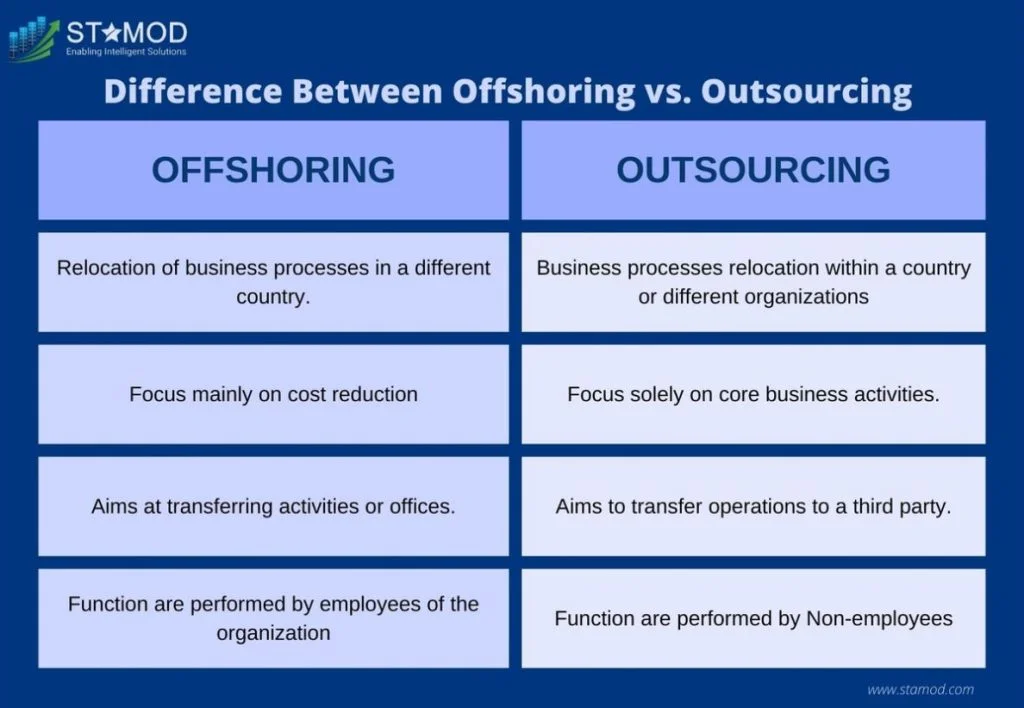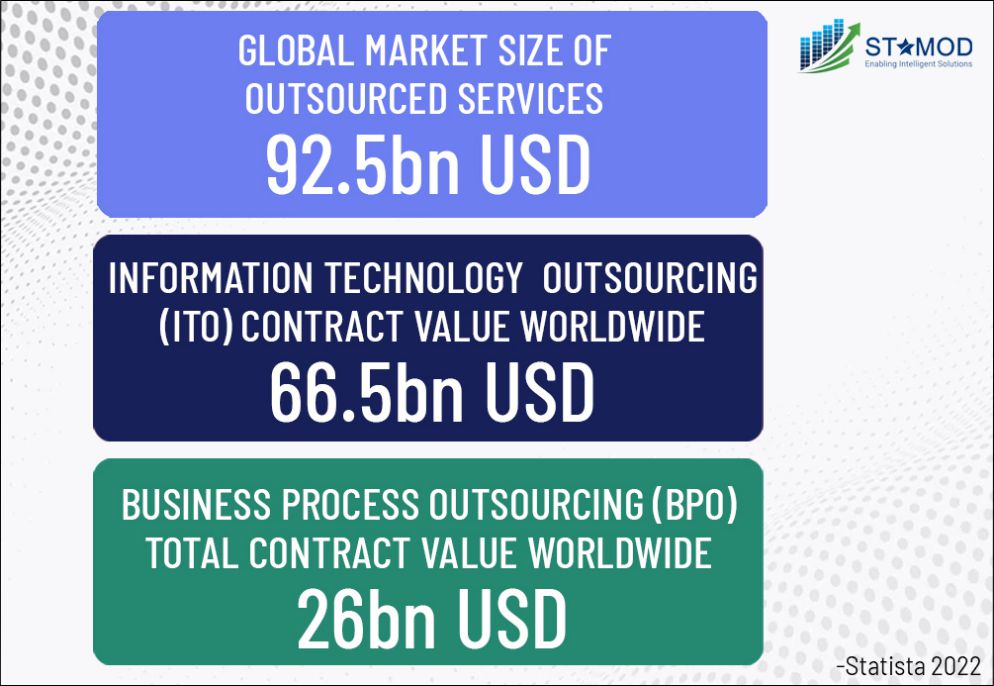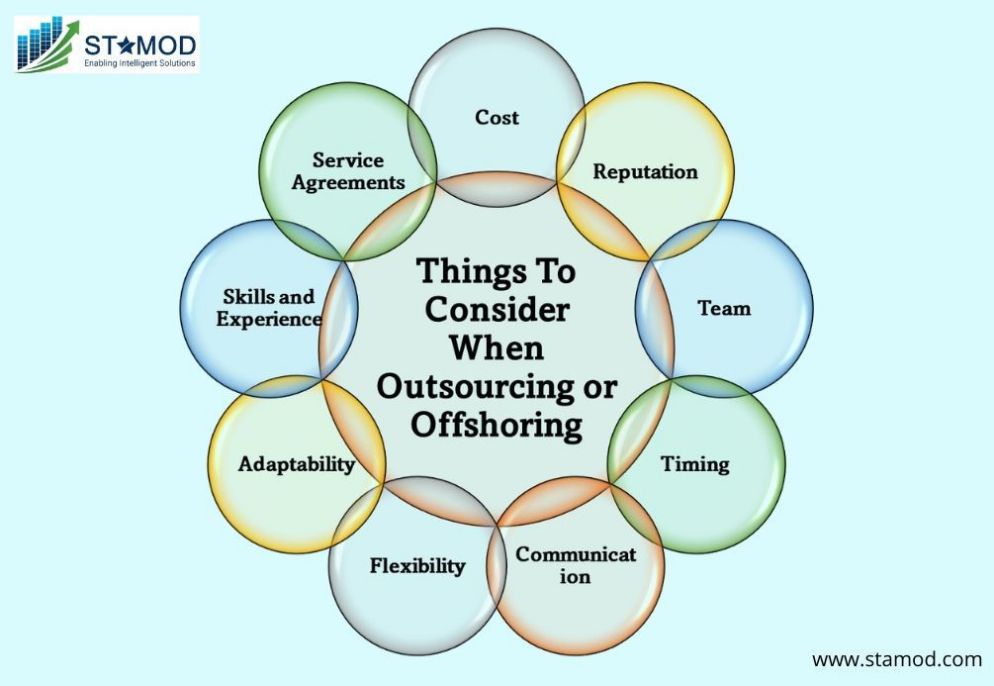
- Home
- Solutions
Engineering
Manufacturing
Intelligent Automation
Staff Augmentation
Engineering
Manufacturing
Intelligent Automation
Staff Augmentation
- Industries Covered
- Resources
- About Us
- Get in Touch


One of the biggest decisions any company has to make when it comes to outsourcing or offshoring is which one to use and why. While both offer you the opportunity to save time and money, they each have their own unique benefits that make them better in different situations. Here are nine points to consider when choosing between offshoring vs. outsourcing your business needs so you can get the best value for your business’s growth and success.

While there’s no direct correlation between distance and cost, it does help when you’re dealing with a time difference of more than one hour and working on software or design projects ( it becomes easier to outsource manufacturing.) This can give your team better visibility into a project without having to schedule an entire day just for a simple check-in meeting. Additionally, thinking about offshoring vs. outsourcing your project? Culture is another important factor that needs consideration before making any decisions. The general rule is that if you’re outsourcing design work, look at places like India; if manufacturing is your primary objective, China can be a good fit, while India will come in second with prices but better quality. If neither of these work for your needs, consider Canada/Mexico as an alternative location. It offers similar proximity to North America while still being affordable.
With tech products and services, such as software or information technology (IT) solutions, you have a lot of options when it comes to offshoring versus outsourcing. The manufacturing processes will be different depending on what type of product you’re making. While one country leads in designing the software product, the development happens entirely elsewhere. However, for clothing products, both production and design happen at a single location. Software development can be done more cheaply by workers overseas than by domestic employees. So, if you’re looking for cost savings, look no further than your software team. However, there are other factors to consider beyond just price. Here are some things to think about before deciding whether to offshore or outsource your software/manufacturing or engineering design needs.

If you’re looking for customer service solutions, a third-party call center is a great option for outsourcing your customer service. With low labor costs and workers that are familiar with multiple languages, call centers are able to provide round-the-clock support at affordable rates. The best part is that when you outsource your calls to an independent agency, your customers will never know they’re talking to someone in another country!
Good negotiating is worth its weight in gold—but only if you’re doing it right. There are companies that have shut down an entire plant in a country like Mexico, for example, because they weren’t able to effectively negotiate pricing with their partners. If you don’t know what you’re doing, then all of your plans and calculations could be rendered useless. It’s important to know how much money you can afford to spend on different aspects of your business and how much money is being made at each step along the way. For example, outsourcing may cost more than offshoring but could be better for your company in terms of quality control and customer service. Focus on quality, timely delivery. Always use third-party inspection for quality.
If you’re outsourcing a business function, chances are you don’t have ready access to talent in your area. And if you’re offshoring, that means you have challenges with flexibility and scalability. The ability to scale up or down quickly is important for many businesses. Flexibility also includes being able to respond quickly to new opportunities or changing markets. If you outsource, you may need to train employees on how to do something and manage your outsourced relationships. There may be language barriers or cultural differences. This can affect how easily offshoring vs. outsourcing employees can work together toward a common goal. To ensure quality control, make sure you have processes in place so that people who work together understand what’s expected of them. Also, they should know how their roles fit into overall goals for both individual projects and company-wide initiatives.

The team approach requires that all outsourced projects are assigned and tracked as a team project. This means that no single team member is left on his or her own. Keeping each individual up-to-date with goals, milestones, deliverables and other general information about both project management and their work will help your team stay motivated and focused during each step of your project’s lifecycle.
Both offshoring and outsourcing have independent risks, which need consideration based on your situation. It’s important that you don’t just read online reports and presume that one option is universally better than another; compare your company specifics to these factors, and make a decision that makes sense for your business. For example, if you run an e-commerce site with heavy shipping volume in the winter months, it might not make sense to outsource shipping overseas. It might cause additional weather delays. Also, consider whether you’re looking for a long-term or short-term solution. If it’s just for immediate needs, it might not matter as much if there are longer-term issues with your offshore partner or employees.

Both of these options are costly, but for very different reasons. You’ll want to consider your goals and budget before making a decision. Remember that a little up-front cost-cutting can go a long way in keeping costs down in the long run. Ultimately, it all comes down to whether you’re looking for someone else to do all of your work or if you just need some help with certain aspects of it. And if you choose not to outsource or offshore at all? Well, we certainly don’t think less of you! Sometimes it makes sense not to take on more than you can handle.
One of your top priorities should be working with an experienced company as your partner. Focus on companies with onshore and offshore offices that have developed processes, tools, and a team of experts. They can assist you in making cost-effective, efficient, and high-quality decisions. Skills & Experience: Look for experience in offshoring work for various industries, especially those relevant to your business.
Some firms may not specialize in what you need, so make sure they have all the necessary features to handle your offshoring vs. outsourcing needs. STAMOD has onsite offices in the US and Europe and offshore facilities in Asia – India, Malaysia, and the Philippines.
Your email address will not be published. Required fields are marked *
© Copyright 2023 - All Rights Reserved By Stamod